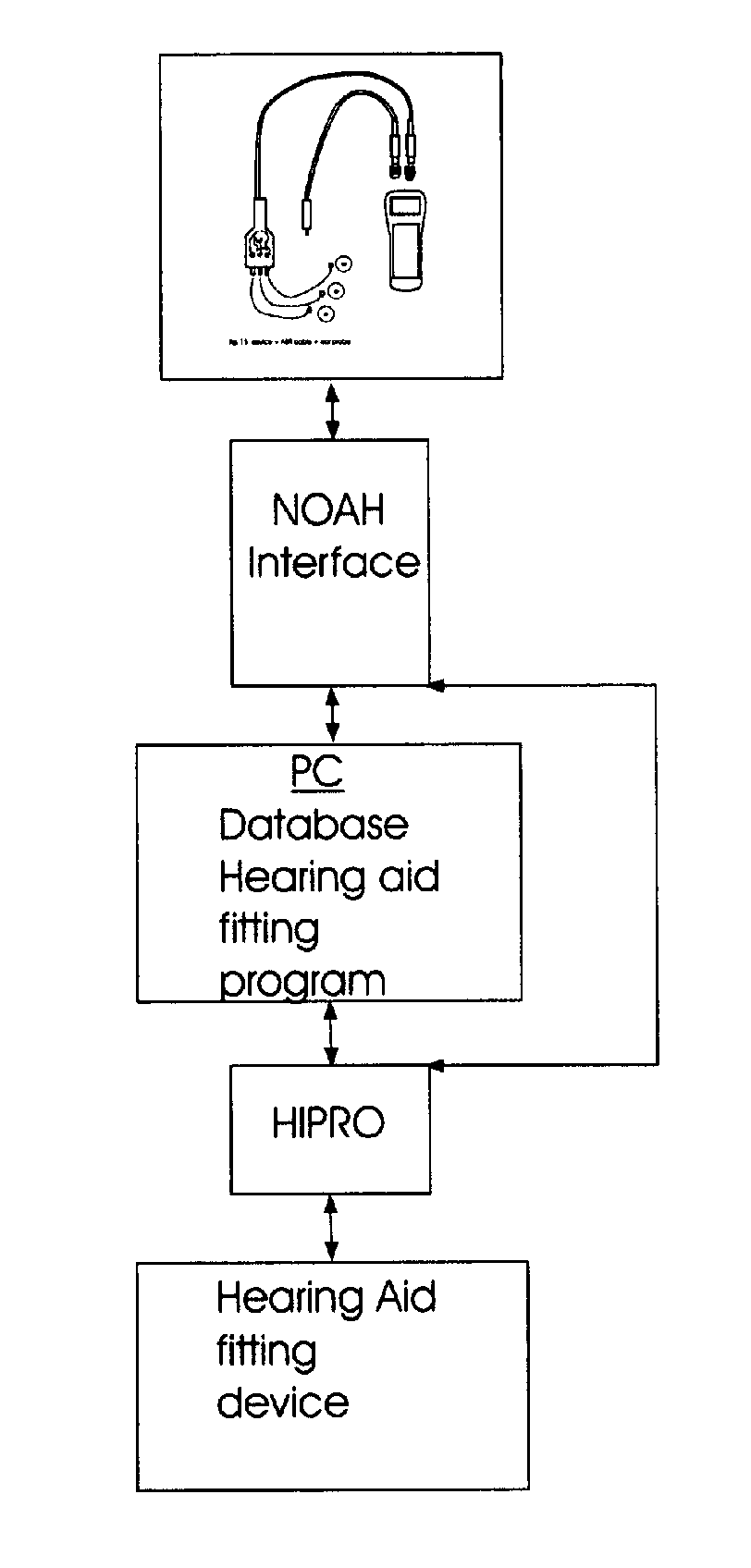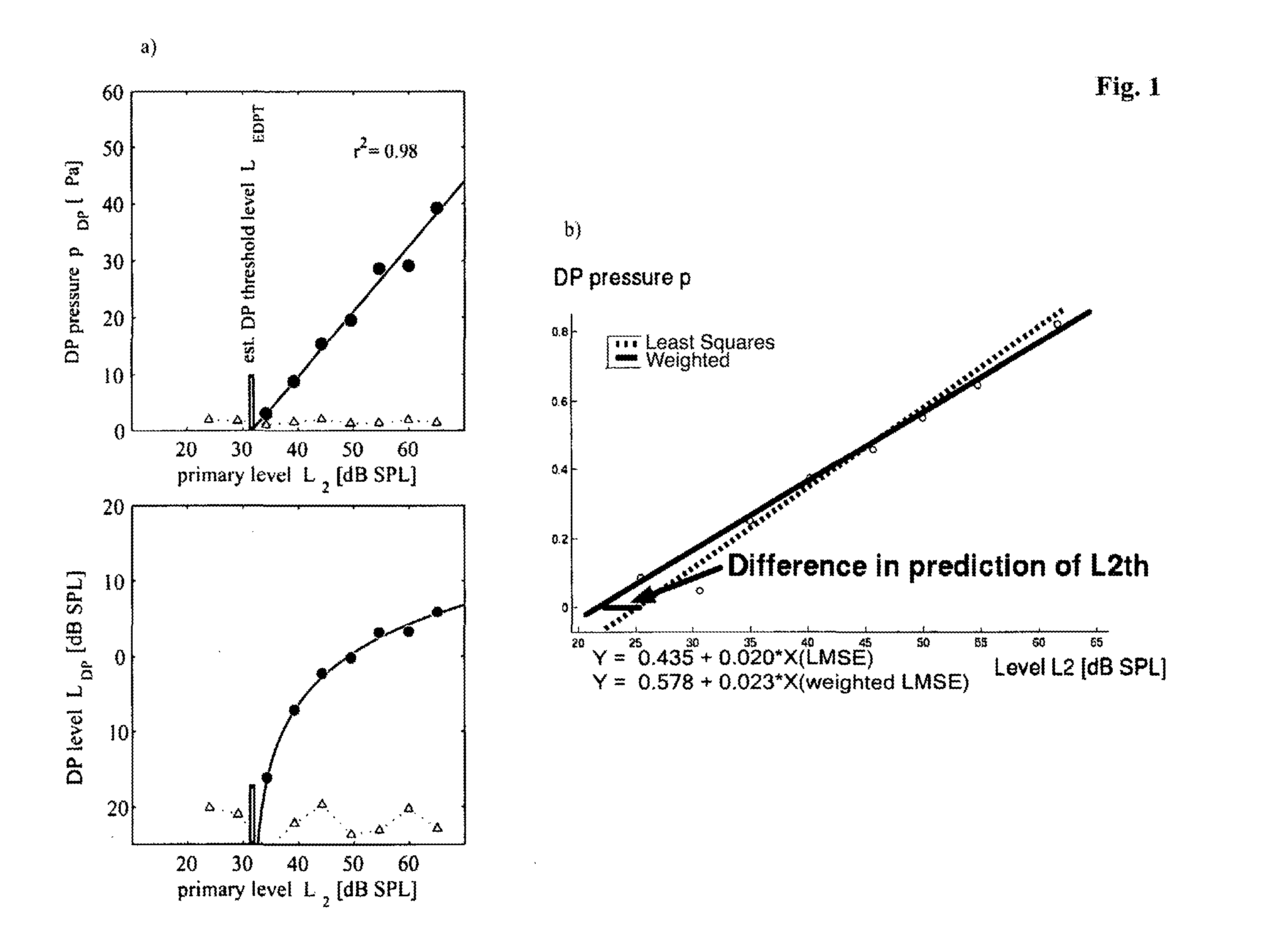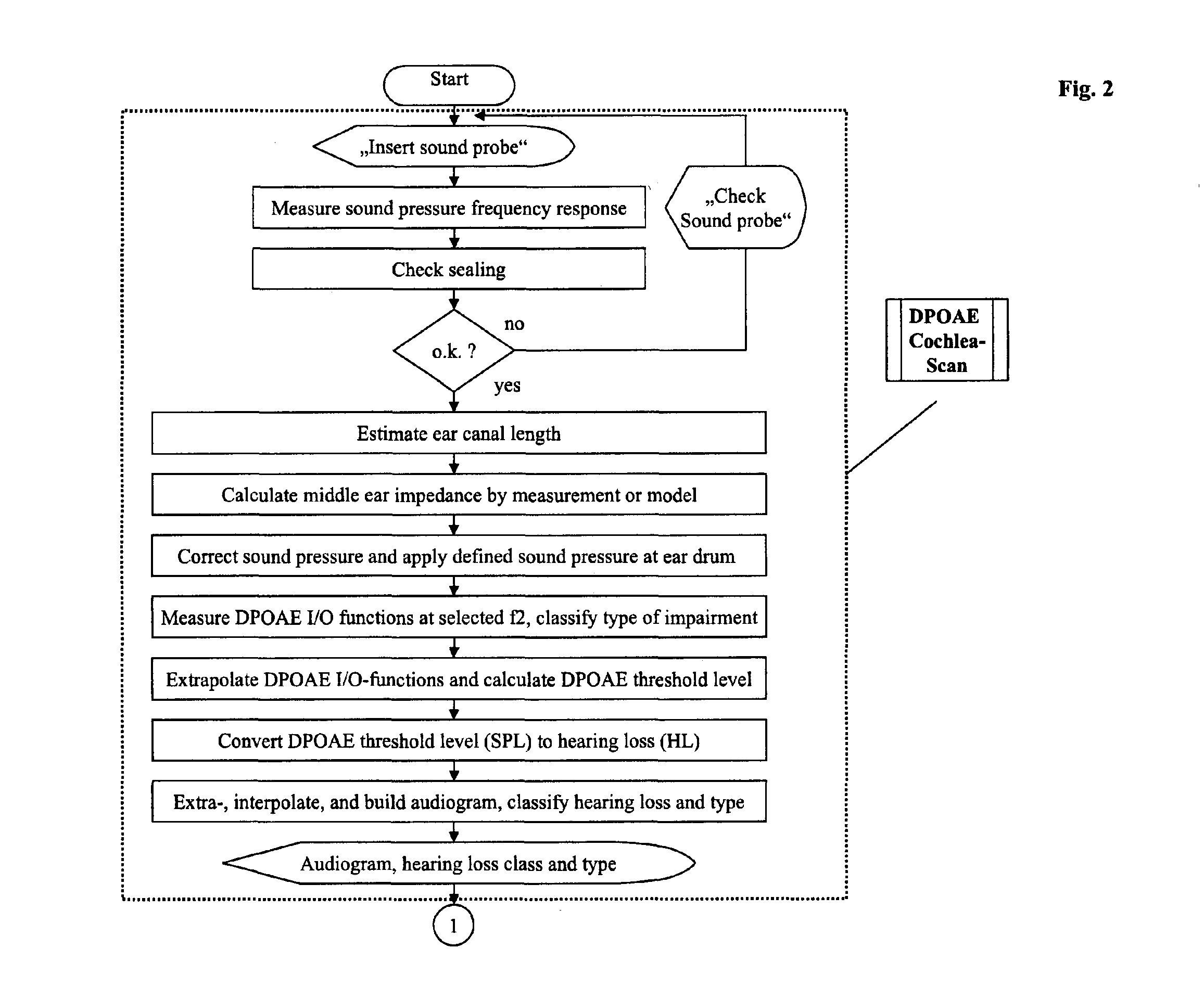Method for automatic non-cooperative frequency specific assessment of hearing impairment and fitting of hearing aids
a frequency specific assessment and hearing aid technology, applied in the field of hearing testing and hearing aid fitting devices, can solve the problems of not being able to direct assess the hearing threshold, the dpoae cannot be measured at very low stimulus levels, etc., and achieve the effects of more time, poor frequency specificity of loudness scaling, and high frequency resolution
- Summary
- Abstract
- Description
- Claims
- Application Information
AI Technical Summary
Benefits of technology
Problems solved by technology
Method used
Image
Examples
Embodiment Construction
[0078]FIG. 1a is a plot of the DPOAE sound pressure pDP (upper panel) and the DPOAE sound pressure level LDP (lower panel) of the same DPOAE I / O-function as a function of the primary tone level L2. The linear fit to the data (solid line) proves the logarithmic dependency of pDP on p2.
[0079]FIG. 2 is a schematic of DPOAE Cochlea-Scan measurement.
[0080]FIG. 3 is a schematic of ABR Cochlea-Scan measurement.
[0081]FIG. 4 is an example of how to derive hearing aid fitting parameters from extrapolated DPOAE I / O-functions.
[0082]FIG. 5 is a schematic of how to manage automatic non-cooperative hearing aid fitting.
[0083]FIG. 6 is a schematic of tympanometry for automatically assessing middle ear status.
[0084]FIG. 7 is a schematic of ABR Inter-Peak-Latency for automatically assessing eighth (auditory) nerve disorder.
[0085]FIG. 8 is a schematic of a switch selector used to active the scanning device. Initially, an operator selects either a DPOAE and / or an ABR cochlea scan to active the microphon...
PUM
 Login to View More
Login to View More Abstract
Description
Claims
Application Information
 Login to View More
Login to View More - R&D
- Intellectual Property
- Life Sciences
- Materials
- Tech Scout
- Unparalleled Data Quality
- Higher Quality Content
- 60% Fewer Hallucinations
Browse by: Latest US Patents, China's latest patents, Technical Efficacy Thesaurus, Application Domain, Technology Topic, Popular Technical Reports.
© 2025 PatSnap. All rights reserved.Legal|Privacy policy|Modern Slavery Act Transparency Statement|Sitemap|About US| Contact US: help@patsnap.com



